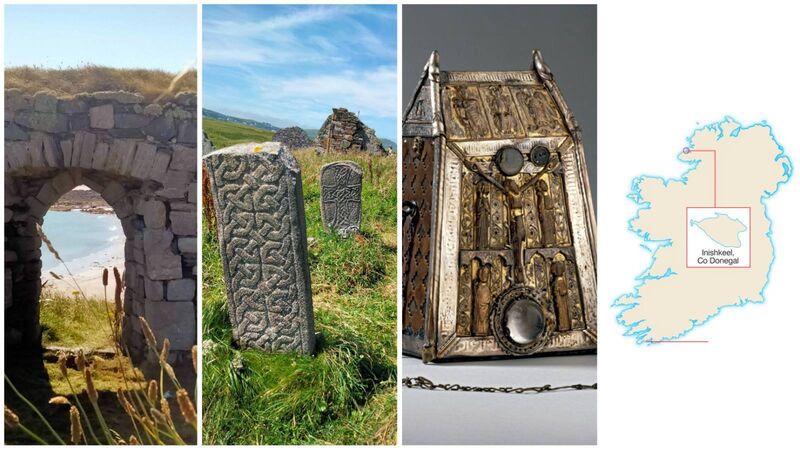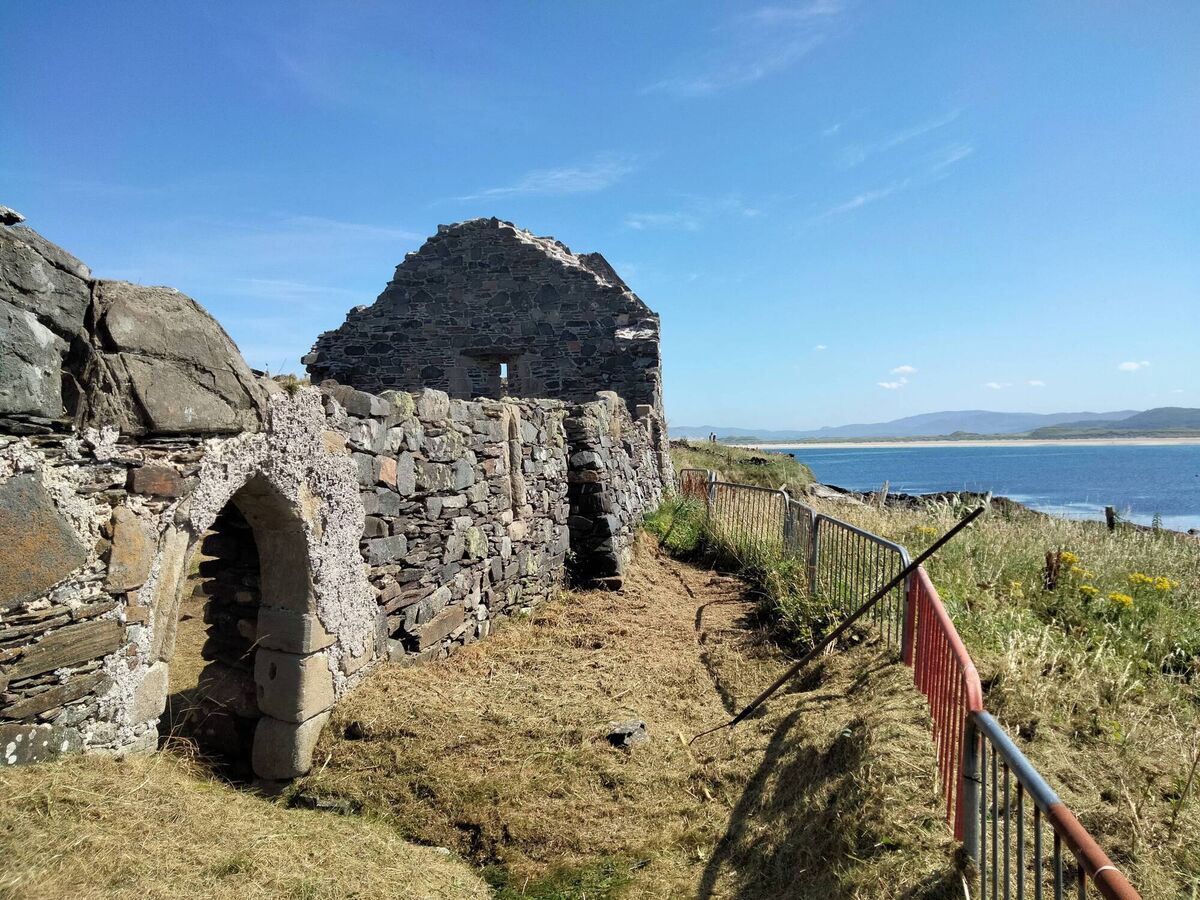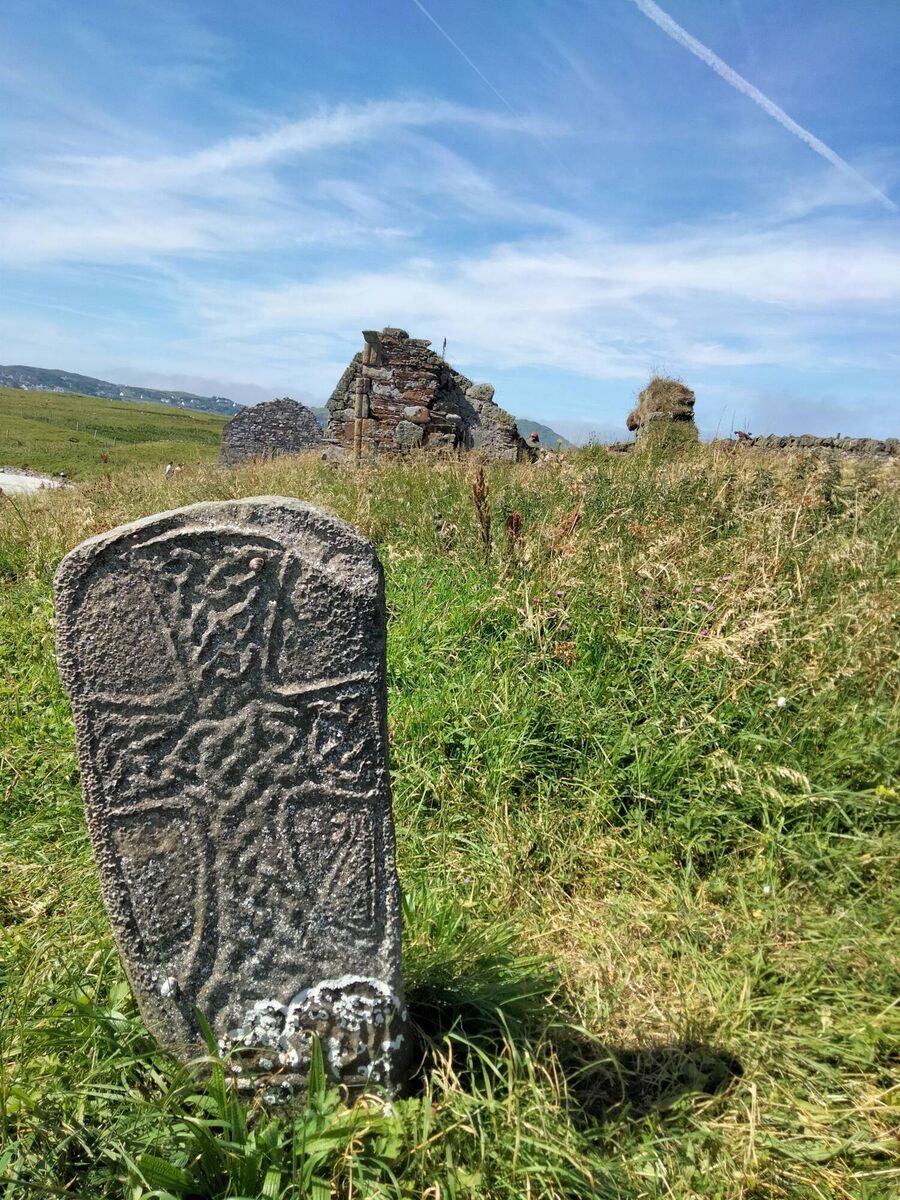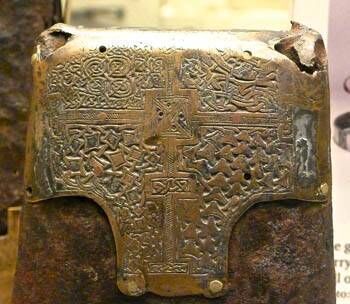Islands of Ireland: Donegal's Inishkeel has murderous and murdered saints, blue seas, and ruined churches — but no bell

Islands of Ireland: you can walk to Inishkeel Island, County Donegal, if you check the tide tables carefully
Visitors to this rugged part of western Donegal are presented with an astonishingly beautiful beach where the cerulean and azure hues of the sea mesmerise against a backdrop of the blue and black mountains to the north. That’s in good weather, of course. In the bad — of which there is no shortage — a hammering blast from the Atlantic is a regular occurrence.
When the sea parts, as in the Red Sea, a glorious walk across the beach allows access to this island. Moses does not await, but the remains of a sixth-century monastery, does. The 500m walk must be undertaken with extreme care as there is only a short window of a few hours before the tide turns.
There is a pretty solid-looking farmhouse still on the island and it was around this site probably that the last community of 23 peaked in 1841.

As Irish monks sought out remote islands in the early years of Christianity in Ireland to allow them live a simple life of prayer, dozens of islands were selected for this purpose. Inishkeel is unusual in that it is so close to shore. Contrast this with Skellig Michael 12km out over huge seas.
In the sixth century, Saint Conall Cael arrived with some followers and established a church here. The church he built (no roof now, but four walls standing) is within a stone enclosure that also contains the 13th century St Mary’s church in much better condition.
Not as famous as his cousin St Columba, the story goes that Conall Cael arrived on the island as he had killed his father, and had to atone for the patricide. He was to stay here until he was peaceable enough to allow a small bird build a nest in the palm of his hand. This he achieved after seven years.

He died in the 590s. His companion for a time was St Dallan who is buried with Conall in the graveyard. He was beheaded by pirates.
There are four cross slabs of rare distinction in the graveyard. One depicts a crucifixion scene, Christ with outstretched arms clad in a long robe. archaeology.ie gives a vivid description: “A six-legged animal and two swans are located above the left arm while a similar animal and one swan appear above the right arm. An angel and a human figure holding a spear-like object appear under each arm but the left side is partially missing."

Today, St Conall’s bell and bell shrine (container for sacred relics) are kept in the British Museum. They had been guarded by the O'Breslin family before they sold the objects to the British Museum in 1889.
A note on archaeology.ie states that all the cattle and sheep Breslin bought with the price of the bell, died. St Conall, it is believed, still visits the island every year, on June 1. His feast day is May 22.
The bell is of a simpler design than the shrine which dates from the 15th century. It is pyramidal and lined with bronze sheets. Its mount is engraved with a cross and decorated with animals and ring chains. The shrine’s silver plates are decorated with representations of God the Father, the Virgin and Child, the Archangel Michael, the crucified Christ, and several saints.
In 2015, Donegal County Museum displayed the bell for three weeks on loan from the British Museum. As some historic and prehistoric artefacts are being returned to their countries of origin (the Horniman Museum in London has just returned 72 objects to Nigeria), it is perhaps time too to have the Inishkeel bell and shrine housed in the National Museum, Dublin.
Inishkeel is recorded in verse too. In ‘Dedication’, the navvy poet, Patrick MacGill wrote: ‘I speak with a proud tongue of the people who were And the people who are, The worthy of Ardara, the Rosses and Inishkeel, My kindred — The people of the hills and the dark-haired passes
'My neighbours on the lift of the brae, In the lap of the valley.
'To them Sláinte!’
: N56 west from Donegal Town to Ardara. Then R261 north. Portnoo signposted after 7km. Check tide tables for walk to island.








